Norway and Denmark were occupied by the Nazis in April 1940 (Sweden was a neutral country during the war). Almost immediately, the Germans began arresting targeted individuals and threw them into detention camps scattered throughout Norway. Soon, they would be deported to concentration camps such as Sachsenhausen. As more people were arrested, detained, and deported, various Scandinavian humanitarian organizations became active in gaining access to the prisoners, ensuring correspondence was reached by their families, as well as engaging directly with the Germans concerning their fates.
Towards the end of the war, one major attempt at obtaining the release of concentration camp inmates was successful. It liberated more than 15,000 prisoners of which half were Scandinavian. Believe it or not, the White Bus evacuations were approved by Heinrich Himmler.
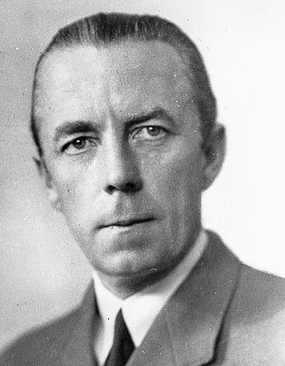
Did You Know?
Rina Fried, then 16-years-old, was crammed into a cattle car with a hundred other women whose skin barely hung to their skeletons. They were all being transported from their concentration camp to an extermination camp to be murdered by the Nazis. The end of the war was closing in and the women knew they wouldn’t survive to see it.
However, the train stopped suddenly and the women were approached by people offering them food and drink. They told the women, “Vi aker till Sverige.” — “We are going to Sweden.”
“Your enslavement is over.”
One of the White Bus platoons rescued Rina and the other women.
Folke Bernadotte
Count Folke Bernadotte (1895−1948), Swedish diplomat, was the grandson of King Oscar II of Sweden and nephew of King Gustav V. Entering the military in 1915, Bernadotte eventually rose to the rank of major. By 1933, he was representing Sweden at various world events such as the New York World’s Fair in 1939. Bernadotte became director of the Swedish Boy Scout organization in 1937 and when World War II broke out, he helped train the boy scouts in defense (i.e., anti-aircraft guns) and as medical assistants. However, his greatest role during the war would be played as the vice chairman of the Swedish Red Cross.
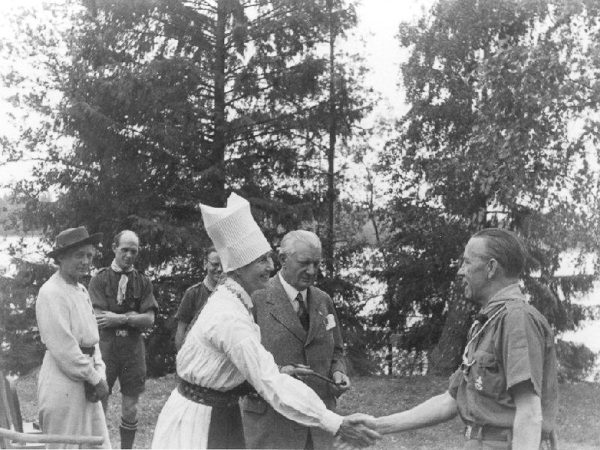
Beginning in 1943, Count Bernadotte organized multiple prisoner exchanges with Germany (his first mission targeted disabled Scandinavian POWs). A total of approximately 11,000 Scandinavian POWs were repatriated as a result of these exchanges. He also personally led several rescue missions into Germany.
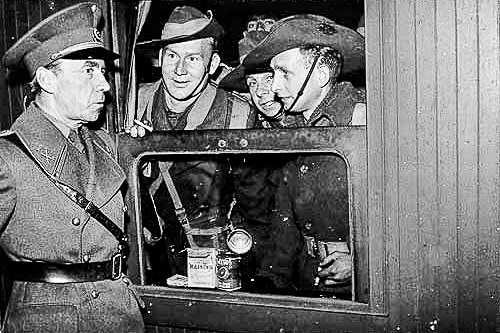
As the war entered 1944, most everyone knew that Hitler and Germany would eventually be defeated. One of Sweden’s concerns (shared by the Norwegians and Danes) was the fate of Scandinavian inmates in the concentration camps prior to the liberation of the camps by the Allies. They were fully aware of the brutal tactics of the Nazis and foresaw what ultimately came true in many camps (i.e., wholescale massacres of the inmates to eliminate eyewitnesses to Nazi atrocities). Thus, was born the idea of rescuing Scandinavian prisoners before the war ended.
Meeting With Himmler
Following the assassination attempt on Hitler in July 1944, power was gradually stripped away from other Nazi leaders such as Hermann Göring and transferred to Heinrich Himmler, head of the SS and Gestapo. Eventually, Himmler saw himself as Hitler’s successor and by early 1945, did not harbor any illusions about the fate of Germany.
In early 1945, Himmler met with Count Bernadotte at the Swedish Red Cross headquarters located on the grounds of Friedrichsruh Castle in Germany (the castle was owned by Bernadotte’s friend, Otto von Bismarck and his Swedish wife). During the meetings, he tried to convince Bernadotte to carry an offer to surrender to the British and Americans with the caveat of allowing Germany to continue its fight against the Soviet Union. In return, he would allow Bernadotte to organize efforts aimed at transporting Scandinavian concentration camp inmates to Sweden. Himmler thought this gesture would ensure he was viewed in a positive manner.
Bernadotte knew the Allies would reject outright Himmler’s surrender offer. He also knew that Himmler’s reputation with the Allies was, let’s say, less than stellar. Himmler’s role in the murder of millions of people was well known. However, here was an opportunity to save thousands of people and Bernadotte wasn’t about to let that slip through his fingers. He agreed to pass the surrender offer along to the Swedish government. Bernadotte also knew that to tell Himmler the truth about his standing with the Allies would squash the deal. So, the offer was passed on and ultimately rejected without so much a thought. But in March 1945, Himmler kept his word and allowed Bernadotte to begin his rescue mission.
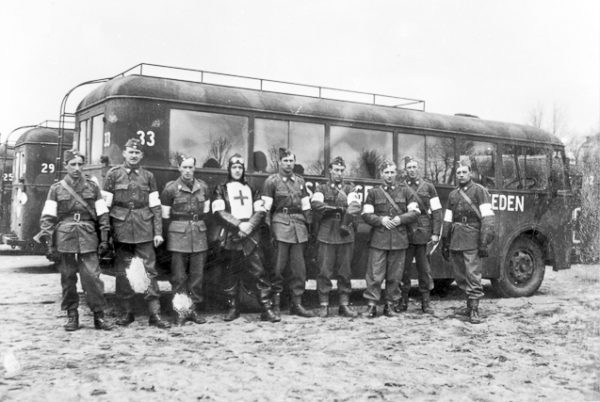
The White Buses
The buses were painted white with giant red crosses on the roof and sides. While this was to identify them as non-combatants to the fighter pilots, some of the Allied bombs and bullets unintendedly killed some of the passengers. Financially, the Swedish government underwrote the missions and supplied the equipment as well as recruiting volunteers from its armed forces.
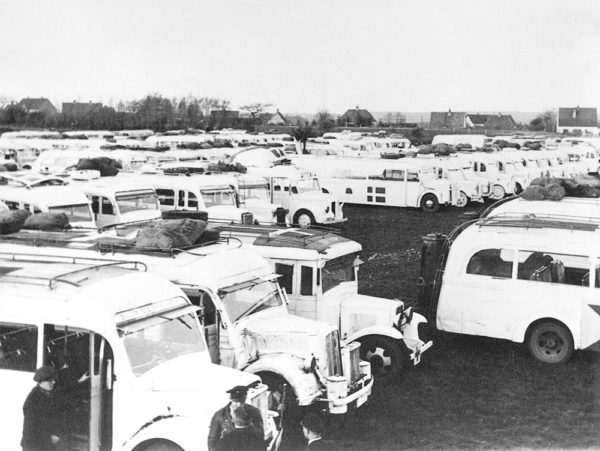
There were thirty-six buses (divided into three bus platoons), nineteen trucks, seven passenger cars (Bernadotte rode in one of these cars behind the convoy of buses), seven motorcycles, support vehicles, and 308 personnel including doctors, nurses, and volunteers from supply regiments. They carried everything they needed since it was known that resupplying in Germany would be impossible. They were told the entire operation had to be Swedish or the Germans would attack. The convoy was accompanied by forty SS and Gestapo officers which allowed the buses unrestricted movement while in Germany.
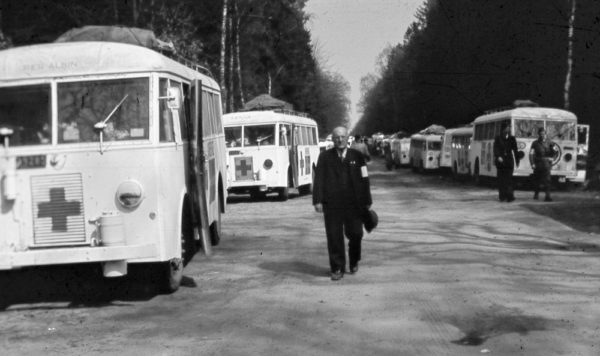
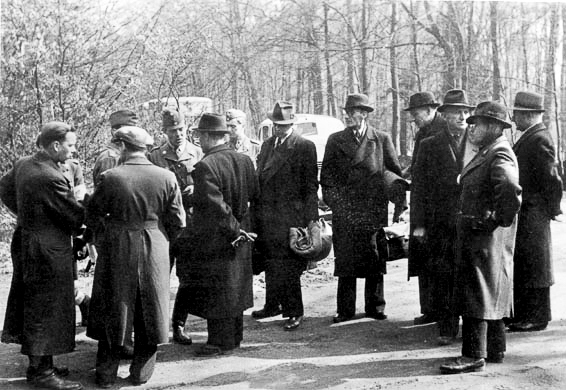
The evacuations began on 15 March 1945 at the Sachsenhausen concentration camp. One of the bus platoons was dispatched to Dachau and Mauthausen. The buses were never allowed into the camps as the Germans did not want them to see what would come to be known as “crimes against humanity.” The prisoners were marched out to board the buses. Eyewitness accounts recorded their impressions upon seeing the inmates and it was generally utter amazement at the horrifying condition they were in. It became difficult for the Swedes to hide their disgust of Germans.
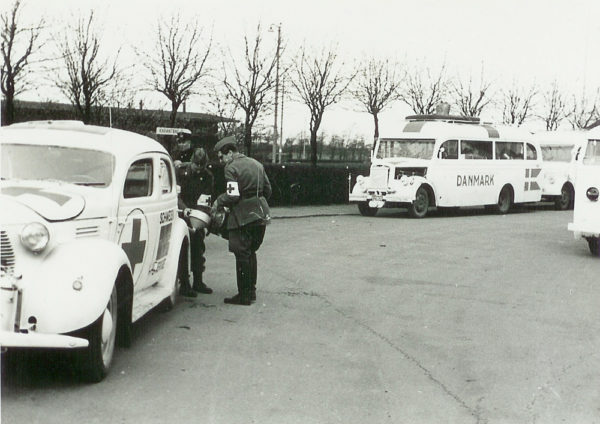
The buses also stopped at Thereseinstadt, Neuengamme, Bergen-Belsen and Natzweiler. At Ravensbrück, approximately 7,500 women were evacuated (click here to read The Rabbits of KZ Ravensbrück). While the operation was originally intended to only carry Scandinavians to safety, in the end, it was an international mission (inmates from France and Poland were heavily represented during the evacuations).
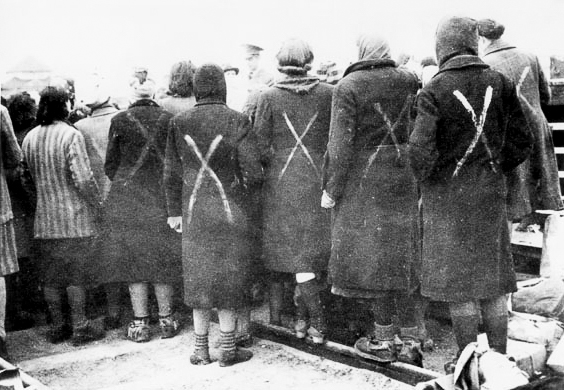
Between March and May 1945, these buses and their convoys rescued more than 15,000 concentration camp inmates. Approximately 7,800 were Scandinavian. It is not known how many Jews were rescued as Sweden did not record religious beliefs.
Immediately after the war ended, the United Nations Relief and Rehabilitation Administration asked Sweden to accept more refugees. Europe, and Germany in particular, were in ruins. Millions of people were homeless, hungry, and needed assistance. Sweden agreed to take in another 10,000 people in addition to the White Bus evacuees.
The White Bus mission was a daring and dangerous plan. Although the Geneva Convention covered the treatment of military prisoners, there was no equivalent protection for civilian prisoners. Bernadotte’s White Bus expedition became the largest civilian rescue action during the second World War.
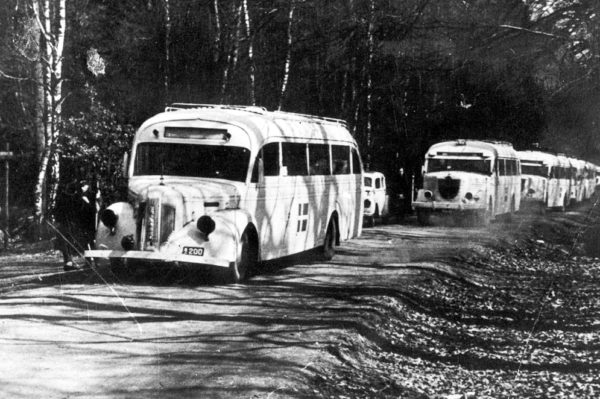
Post World War II
Three years after the end of the war, Count Bernadotte was appointed “United Nations Mediator in Palestine.” He presented two secret proposals for the end of the Arab-Jewish conflict in Palestine. The first proposal failed. On 16 September 1948, the second and more complex proposal was completed. Secret meetings including British and American representatives were held. Unfortunately, the news of the meetings (and proposal) broke just before the American presidential election in November 1948. This placed Harry Truman in a position where he strongly supported the Jewish state. His comments were used to defeat the second proposal.
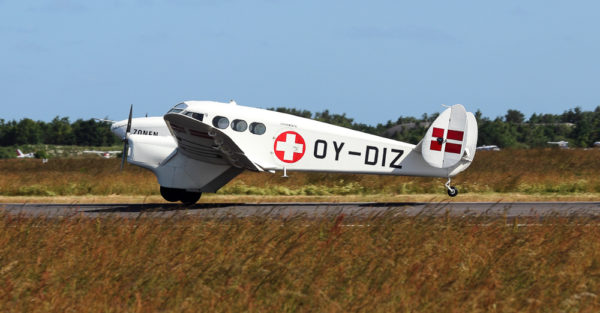
The following day, 17 September, Count Bernadotte and his three-car convoy were subjected to two separate assassination attempts. The first non-lethal attempt occurred when a young Arab shot at his car leaving the airport. The second and better organized attempt by four members of the Jewish Zionist group known as Lehi ambushed the Bernadotte’s party in Jerusalem. The count and a passenger were killed (the other man killed was UN observer, André Serot, who was there to personally thank Bernadotte for obtaining the release of his wife from a concentration camp three years earlier). None of the assassination squad were ever brought to justice and it was only in 1977 that several of the killers admitted their roles. It was also determined that the future prime minister (1984), Yizhak Shamir, had been one of three men in Lehi who gave approval for the assassination.
What an irony that a Swedish humanitarian who was directly responsible for likely saving the lives of Jewish concentration camp inmates would be murdered by Jewish militants.
Learn more here.
Recommended Reading and Viewing
Greayer, Agneta and Sonja Sjöstrand; Translation by Annika and Peter Hodgson. The White Buses: The Swedish Red Cross rescue mission action in Germany during the Second World War. Stockholm: The Swedish Red Cross; 2000.
What’s New With Sandy and Stew?
I’m working on my next seminar for the Renaissance Academy which will be held in less than two weeks. I’ll be speaking on the story of Sgt. Hilton Hilliard and would love to have some of you attend. So, if you’re close by to Punta Gorda, Florida and might like to join us, please let me know.
Someone Is Commenting On Our Blogs
We’ve had several people contact us about information contained in the blog, I Was Looking Forward to a Quiet Old Age (read it here).
I am researching your questions and should be back to you shortly. As always, I appreciate hearing from our readers. Sometimes, those questions lead to a blog story (e.g., Rendezvous with the Gestapo-read it here).
If there is a topic you’d like to see a blog written about, please don’t hesitate to contact me. I love hearing from you so keep those comments coming.
Why Would You Want To Buy Our “Walks Through History” Books?
Simple.
You like to travel and experience history and historical events. You like to see original buildings that had a significant impact on the people and events of the history you’re engaged with. You want to know the stories behind the brick and mortar in front of you.
The walking tour books are meticulously researched so you can go directly to those sites and learn about the building’s history as well as an introduction to some of the more interesting people associated with it.
Thank You
Sandy and I appreciate you visiting with us. We have some exciting things on the horizon and we’ll keep you updated as we go along.
Share This:
Follow Stew:
Find Stew’s books on Amazon and iBooks.
Please note that we do not and will not take compensation from individuals or companies mentioned or promoted in the blogs. Walks Through History
Walks Through History
Copyright ©2019 Stew Ross

I have been writing a book, (fiction) in it the main character is Swedish and fights in the Winter war in Finland, works in a timber factory, volunteers for ambulance/rescue duties in Norway transporting injured and refugees fleeing the Germans and then is chosen to drive a White bus for the rescue missions throughout Germany. There are sub-plots as well.
There are a large number of photos of the White buses taken by doctor Harald Roesdahl before, during and after the operation to save all those folk from the concentration camps. I would like to use two or three in my book but am unable to find out who could give permission. Are you able to help please?
Kind regards,
Pete Thompson,
Italy
Ciao Pete; thanks for contacting me with the image information on Dr. Roesdahl. You’ll notice the images included in the blog, The White Buses, are attributed to “anonymous.” Well, after doing some research on Roesdahl, I found the photo album his widow donated to the Museet på Sønderborg Slot. Clearly, many of the images I used should be attributed to Roesdahl. Anyway, if you access http://www.arkiv.dk and search under his name, you will be treated to eighty-three photographs, many of which are the White Buses. It sounds as though the museum will be accommodating to your request to use the images for your book. I sent you a separate e-mail with more detail including contact information. I hope this helps. Thanks again for reading our bio-weekly blog and I hope you’ll consider subscribing. STEW
Thank you for describing this important rescue action.
Brgds
Peter Thulesen
Nuuk
Greenland
Hi Peter; Thanks for reaching out to us. I appreciate your comment. One of our readers is researching this topic with the intent to write a book. I hope he is successful in uncovering new information. Best. STEW